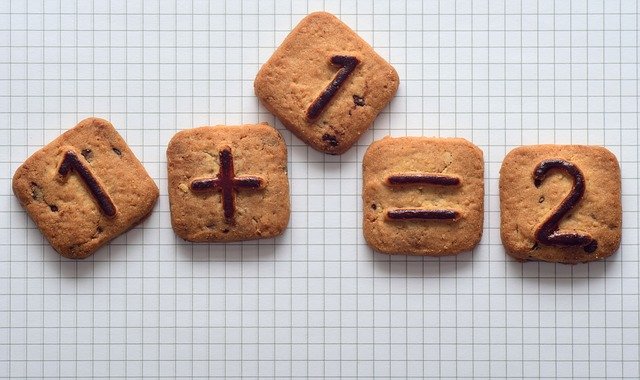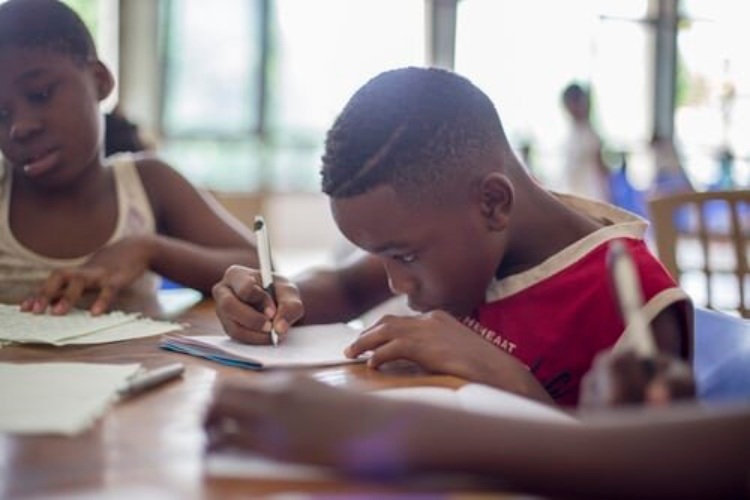For more than a generation, the child-centred approach to education pioneered by Dr Maria Montessori, an Italian physician, has been reforming schools all over the world.
You can tell what is up when you walk into a classroom for the first time. Montessori classrooms are easily identified. Children will be practising alone and in communities, often with specially crafted learning materials; they will be actively interested in their work, and they will be mindful of themselves and their environment.
The Montessori Method promotes systematic, self-motivated progress in all aspects of development for children and adolescents—cognitive, mental, social, and physical.
Want to know how to teach addition for kids in the Montessori style? Read this article till the end to know everything about the Montessori style and Montessori maths.
Learning courses for your kids! Get free trial here
What is Montessori Learning?
The Montessori method of teaching is a one-of-a-kind approach to early childhood education. The Montessori approach has been successfully adopted into the curriculum of both private and public schools, and in its true essence, it is a form of teaching that promotes child-led education and development.

Sapientia Montessori School, among the few AMI Accredited Montessori Schools in Texas, wishes to provide potential parents with the knowledge they need to make the best decision about their children’s development. And besides, selecting an academically challenging and nurturing atmosphere for your child are some of the most crucial decisions you’ll ever make as a parent.
We are sure that a Montessori education can benefit any child.
Also Read: Math Game For Kids: Develop Maths Skills with a Mix of Fun and Entertainment
Montessori Learning Components
While each Montessori school is distinct, there are some similarities between them. This consistency was based on a shared collection of components that direct students and teachers during the curriculum.
Groups of Children of Different Ages
The Montessori program’s multi-age gatherings of children are a special classroom element. There are two reasons for multi-age clusters in the school environment: Younger students typically understand more about their older classmates, and older students absorb more experience by teaching it to younger kids. Aside from that, mixing children of various ages and stages in the class simulates the natural world, showing students how to get along with people of various ages and ambitions.
Activities of Students Choice
Montessori education is not a one-size-fits-all solution. Montessori teachers design their classrooms to encourage safe, independent discovery and learning, frequently through hands-on exercises and lessons. Kids will feel free to explore and experience the world around them whether they are learning in an environment that promotes their innate curiosity. Generally, an instructor would offer students the option of choosing from a variety of hands-on tasks to fill their day. These exercises incorporate or strengthen themes and skills chosen by the instructor depending on the ages and needs of the students. Among the advantages of this strategy is that instructors will create lessons that are appropriate for each child’s age and skill.

Unhindered Blocks of Time for Activities
We enjoy for our students to participate in the learning phase. If they’re three or thirteen, our aim is to give each kid the time they need to learn and comprehend their surroundings. A Montessori day is divided into 2 to 3-hour blocks of time, helping children to dig in and learn a multitude of topics rather than spending 30 minutes on mathematics, 30 minutes on history, and 30 minutes on literacy.
Also Read: Fun Typing Games for Kids: Improve Your Kid’s Typing Skills in a Fun Way
Role of Teachers in Montessori Education
Teachers play an important role in any Montessori class, but their role differs from what you would be used to in a conventional classroom environment. In a typical classroom, a teacher stands in front of the students, rapidly exchanging information and directions. Their function is to distribute material to students and motivate them to memorise it in preparation for the next exam. Teaching in this way also turns the thrill of learning into a task for youngsters, robbing them of the excitement of exploration.
The teacher’s job in a Montessori community is to promote children’s innate desire to explore and develop. Children learn better while teachers allow them to use their own imagination and intellect to collect knowledge and make observations, according to the Montessori method. Their reward is the sense of accomplishment they get as they learn a new idea.
Learning courses for your kids! Get free trial here
Maths Progress Levels: Guide for Parents
Most of the Montessori programme is focused on exposing children to physical materials first, and gradually introducing them to more complex ideas. When it comes to algebra, there is no exception.

What exactly do you understand by the word “concrete”? The children will grasp a substance with their hands. The objects are symbolic or descriptive of something (perhaps a digit), and the symbolism evolves over time before children are able to let go of the resources and solve problems on paper or even in their minds. This concept of learning a talent without the use of materials is known as abstraction.
Montessori Maths: Additional for Children
Montessori mathematics materials use hands-on, multimedia, and physical learning aids to help children understand math. These resources allow students to connect concrete knowledge to often theoretical math principles. When students internalise much of the knowledge structured by the topics, the materials become more complex as they advance through the Montessori math system.
Any Montessori math tools, such as an abacus or a division table, may seem familiar to those unfamiliar with Montessori education, whereas others may seem unique and unusual. Montessori teaching employs a diverse set of resources to investigate the base 10 number structure and the myriad relationships between numbers.
How to Teach Addition for Kids? Additional for Kids Activities
Number Rods: Additional Sums for Kids
Number rods are identical to the red poles of the sensorial materials, a series of ten wooden rods, the smallest of which is ten centimetres long and increases by ten centimetres per time. Each 10-centimetre portion of the number rods alternates between red and blue, indicating the number of bits. Students are introduced to the principles of numbers and counting through the use of these poles.
Sandpaper Numerals
Sandpaper digits 0-9 are fixed on flat wooden tablets. These sandpaper digits assist students in recognising and being familiar with numbers. After, students arrange the numbers in the correct order.

One Through Ten Objects: Additional Sums for Kids
Counting from 1 to 10 is an important aspect of early math education. A variety of items are used to illustrate this action, including counting out particular numbers of various objects and grouping them under the appropriate numerical heading. This enables students to practise counting each number from 0 to 10 individually.
Also Read: Teaching Critical Thinking to Children: Games, Activities, and Books
Cards and Counters
This relatively plain material is made up of a series of numbers and an inventory of “dots” that are used to display the numeral. Students layout their numbers, arranging them in the correct order, and then align the appropriate number of dots under each numeric value. Kids then continue to investigate the definitions of odd and even figures by connecting the dots beneath the numbers.
Short Bead Stair
A deck of cards with the digits 1 to 9 printed on each, as well as a set of bead chains with the appropriate number of beads. These beads and cards are used by students to practise measuring items and writing digits.

FAQs
What is the Format of Primary (Early Childhood) Math?
Math starts out basic at the primary stage, but you might be shocked at how many preschool children are aware of it. And before a child can count, they can practise with objects such as the number rods, which are a set of blue and red coloured wooden rods organized in a stair-like fashion. Counting is taught to children using a range of resources. The spindle box is a simple material in which kids insert the appropriate number of wooden spindles in chambers numbered 1 to 9. Sandpaper numbers (much like their letter equivalents!) show children how to properly shape and number, preparing them to write them on paper.
What Does it Look Like?
Montessori understands the significance of memorising simple data. Although we could have used flashcards to drill these truths into our minds as children, the Montessori method starts by teaching children why we use numbers in various ways. Young children enjoy the repetition of the materials because it provides them with many opportunities to practise (and memorise!) these details. The addition and subtraction panel boards clearly demonstrate to a kid what happens when we add numbers. The same is true for the bead boards for division and multiplication.

What is the Format of Elementary Maths?
Remember the red, blue, and green stamp game tiles? These are known as the hierarchical colours of Montessori, and they are made to educate children about number series and tables. They first emerge in the stamp game, but they begin to accompany the child through the bottom and top elementary school until they have a strong grip on the concept of the basic family of quantities, the thousands family, and many more.
When a child has mastered the stamp game, they will progress to using a material known as the bead frame, which can demonstrate addition, subtraction, and multiplication. It resembles an abacus, but now with 10 beads in different colours arranged in a hierarchical pattern on each rod. When a child has mastered the bead frame, he or she is usually able to add and subtract in the hundreds (and beyond!) with only a pen and paper.
Conclusion
Mathematics is important in a child’s development because it helps them make sense of their surroundings. Children aged 1 to 5 years old are starting to investigate patterns and shapes, compare weights, and count items. When it comes to preschoolers, they use a combination of approaches to solve problems and communicate their conclusions.
You can teach your kids any subject with the help of The Real School Of Montessori. Explore through the blog section to find fun learning games and activities to make any subject interesting.
Also Read: Best Online Coding Classes for Kids: A Complete Guide to Get the Best








Great article.